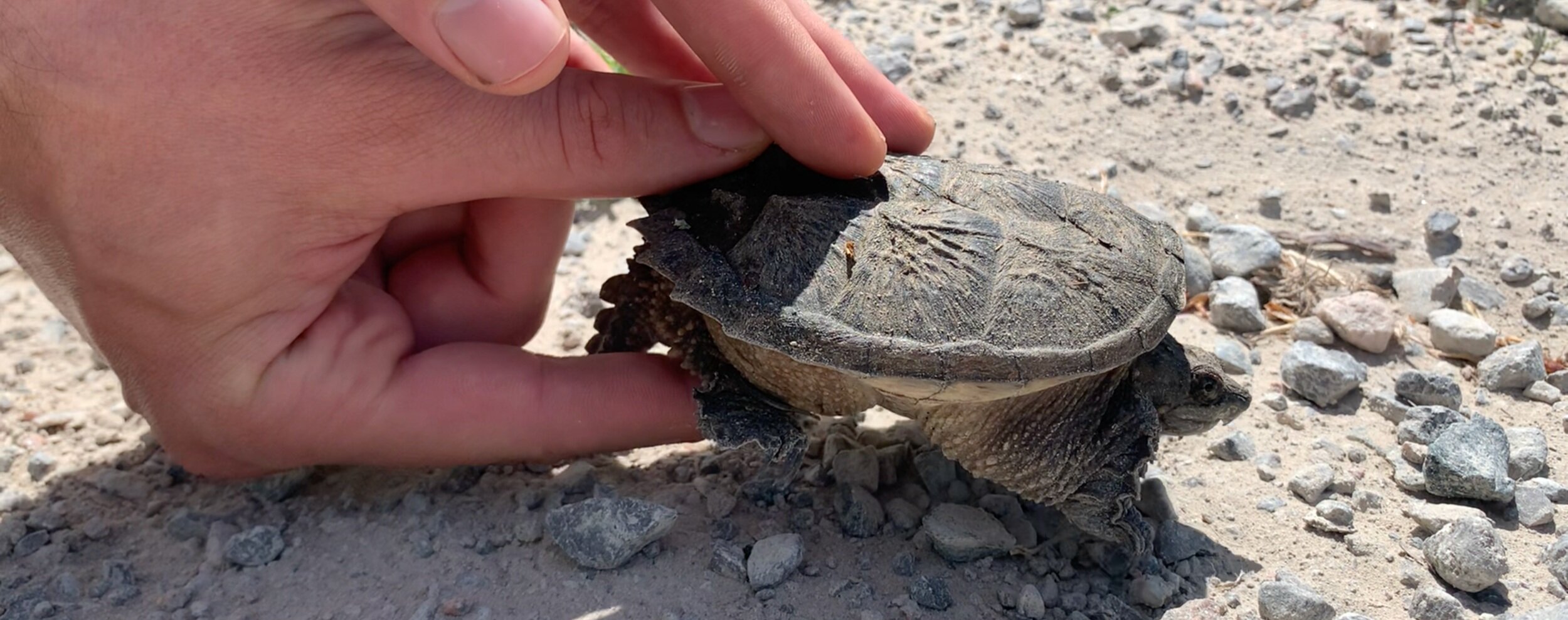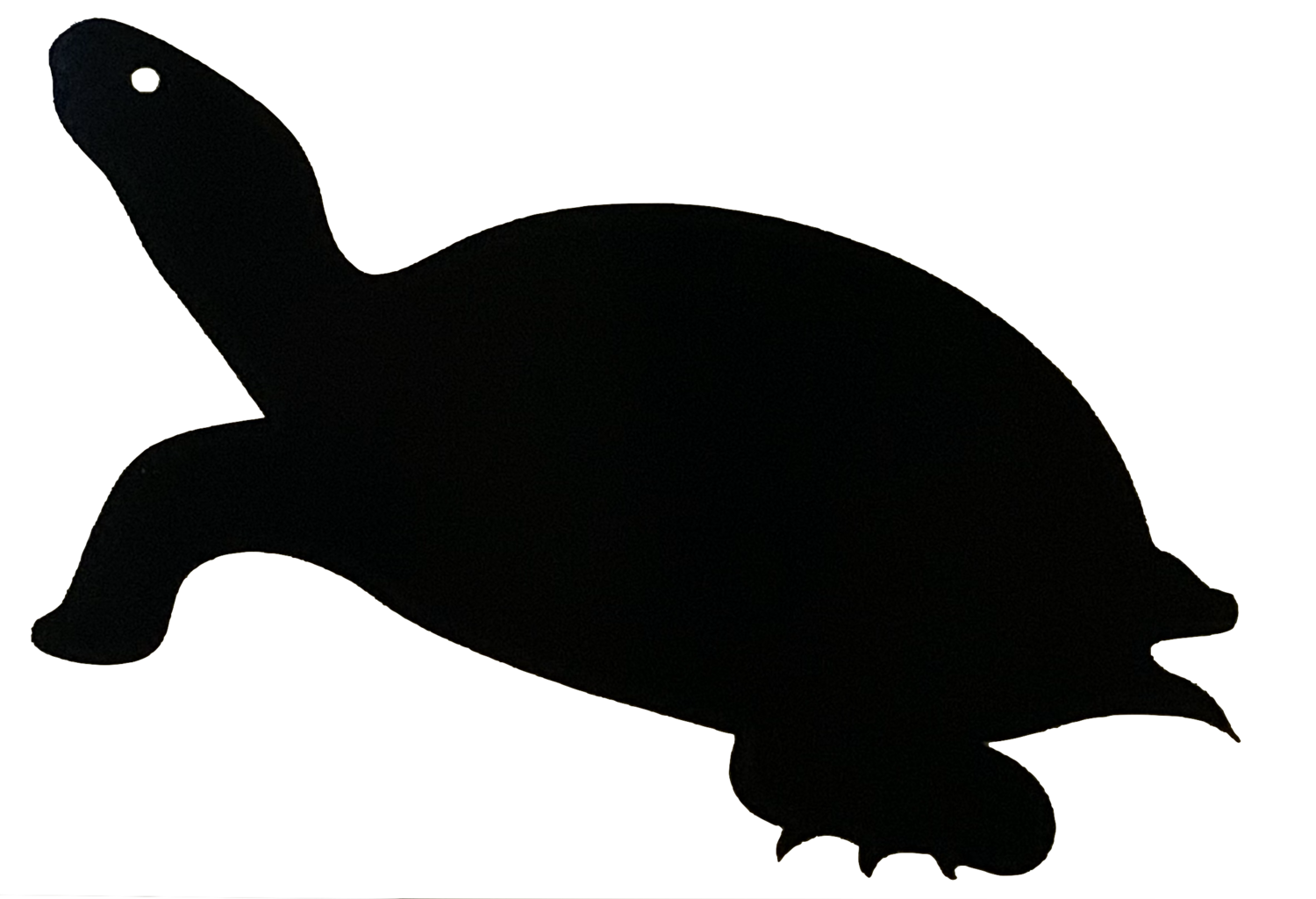How to Move a Turtle

Thank you for helping turtles cross the road. Before you ever help a turtle, you must make sure that it is safe for you to do so. Check out our road safety guide.
Moving a Turtle
If it is safe to do so, we always recommend allowing the turtle to cross the road on its own. Stand back so the turtle feels comfortable to continue crossing and watch for oncoming traffic. Since it can take turtles about 9 minutes to cross a road, you may need to intervene if there is a lot of traffic.
For any turtle it is important not to remove them from their native area unless they are injured, in which case they need to be returned to where they were found once rehabilitated!
Things to remember when helping a turtle:
Wear gloves
Always move the turtle in the direction they are headed, even if it doesn’t make sense to you (note that turtles that have just nested need special considerations – see below)
Approach the turtle from behind
Avoid excessive handling of the turtle
Always pick up turtles with two hands
Be aware of cars and traffic for your safety and the safety of the turtle
Do not unnecessarily move or turn the turtle around while carrying
A turtle may empty its bladder when picked up
Place the turtle well off the road in the grassy area on the side that it was headed to
Do not place a turtle, such as a hatchling, directly in the water – let it go in of its own accord
Moving a Snapping Turtle
Snapping turtles are not aggressive, but protective of themselves since they have a small plastron (bottom shell) that doesn’t provide much protection and prevents them from retracting into their shell.
Do not worry, a common snapping turtle in Ontario cannot break bones or tear off fingers, their bite is like that of a human.
Things to remember when helping a snapping turtle:
They have long necks so you must carry them by gripping the back half of their shells.
We recommend the pizza hold method for smaller snapping turtles (see instructions below)
larger turtles we recommend placing the turtle on a car matt that can be dragged in the direction the turtle was going (see video)
Always wear thick utility gloves to protect yourself from scratches
When you first lift a snapping turtle, it will most likely snap. When it does, it will give a strong jerk. Be prepared for this so you do not drop the turtle
You don’t have to pick it up. If there is no traffic you can coax the turtle from behind to cross the road on its own with a broad, flat shovel or brush.
Moving Smaller Turtles
Although these turtles are small, always carry them with both hands like a hamburger to avoid dropping them if they unexpectedly move.
Things to remember when helping a turtle:
Avoid over handling, turning, or spinning a turtle when carrying
Place the turtle as far off the road as possible
Wash your hands after handling turtles
Check to make sure the turtle isn’t injured before releasing it
Never remove a turtle from its habitat. Turtles know their ‘home range’ — where to feed, nest, and overwinter. If you move them to a new area, they will have none of this information and their chances of survival will decrease.
Pizza hold method
With your non dominant hand, firmly grasp the back of the shell between the tail and hind leg. Be sure to NEVER hold a turtle by their tail!!!
Slide your dominant hand under the turtle, so that your palm is against the underside of the turtle.
Anchor your elbows to your waist and gently lift the turtle.
Be prepared for a snap from the turtle. When comfortable and secure walk the turtle in the direction that it was headed
What if I’m bitten by a snapping turtle?
First, remain calm! Snapping turtles bite when they are frightened, so if you are calm they may release their hold on you. If the turtle has not released you while you are being calm and motionless, then move yourself and the turtle carefully to water. Once in water, it is likely the turtle will release its bite so that it can escape into the water. Never try to forcibly remove the turtle’s grip.
A snapping turtle’s bite is like that of a human. Thus you will not lose a finger, but you may have a bruise or cut.
How to treat a turtle bite
Clean the wound / bruise with soap and water, then an antiseptic gel to disinfect it and to remove bacteria
If your skin was broken, you should use sterilized gauze to apply slight pressure to reduce any bleeding, then wrap with a bandage
Consult a doctor or nurse practitioner if the wound seems serious, so they can ensure no infection will occur
What if the Turtle has just Finished Nesting?
If you come across a turtle that has just finished nesting, there are additional things you should consider before moving her. First, note that the nesting process can take from 1 to 3 hours. It is very important to give the turtle ample space to complete this process (more than 10 meters).
Following nesting, the female turtle will be exhausted and may show uncoordinated, slow, and jerky movements. She may even move in the opposite direction that she wants to travel in, with the purpose of making a loop to head in her intended direction. As a result, you must pay close attention and give the turtle time to make its movements.
If she heads towards the road, don’t take immediate action. Be patient and wait to see whether she turns herself around with an arched turn to head back to the water on the same side of the road. Watch from a distance of 10 meters but be ready to respond if necessary.
While you wait, it will be important to identify the presence of a turtle to passing vehicles, so we recommend placing one or two safety cones to indicate to oncoming traffic that there is a nesting turtle. Make sure that these cones are at least 20 feet away from the turtle.
The rule of thumb ‘to always move a turtle in the direction they are going’ can be confusing in this situation when the female is making an arched turn. However, if she does give clear indication that she wants to cross the road by passing over the white line and heading directly across the road, then intervene and carry her across when it is safe to do so.



